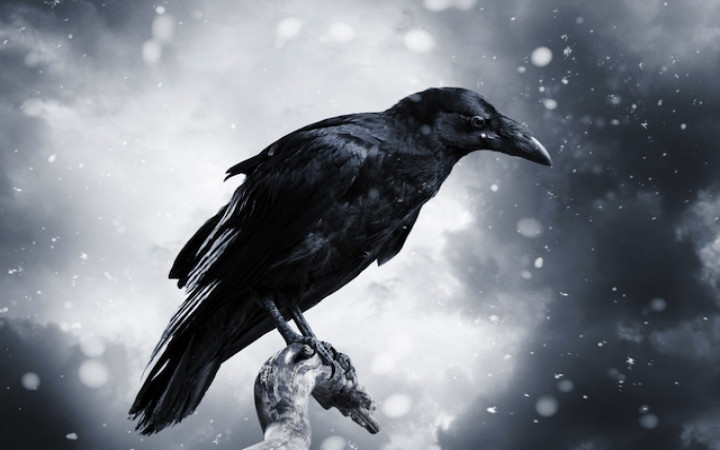Along with the crow, the pitch-black raven belongs to the corvid family of birds. Ravens can grow quite large, weighing between 1.5 to 3.5 pounds. In the wild, ravens typically live 10 to 15 years, though some have reportedly lived up to 40 years.
Ravens live everywhere from the Arctic to the deserts of Africa. They have even been found on Mt. Everest!
Young ravens may travel in flocks, but older birds find a partner. Once the birds have formed a couple, they claim a territory, which they will defend if necessary.
Ravens eat fruits, vegetables, and meat, which makes them omnivores. Experts at locating food, ravens will snack on a wide range of foods, including small animals such as insects and some lizards, grains, berries, fruit, road kill, and human food waste.
Known as a very intelligent bird, ravens owe their smarts to their large brains. Studies have shown that ravens can solve problems and imitate.
Scientists have also observed ravens manipulating other animals into doing work for them. For example, some ravens will call wolves to a location where they have discovered a dead animal. The wolves open the carcass, which allows the raven to swoop down and gather meat.
Ravens also spy on other birds, remembering where they have buried a food stash. The spying bird will then go back and steal the food once the other raven has flown away. Other ravens have caught onto this trick, so very smart birds will pretend to make a food stash to trick any onlookers.
Ravens are not all work and no play, though. Scientists believe young ravens to be some of the most playful of all birds. Biologists have seen them slide down snow banks for fun.
They also play games of “catch me if you can" with other species, such as wolves and dogs. Ravens even make their own toys by breaking off twigs to use in play with other birds.
For centuries, many indigenous people and cultures considered the raven a god. The raven has also been featured in art, folklore and literature, appearing in the writings of William Shakespeare, Charles Dickens, and, perhaps most famously, in Edgar Allan Poe's poem, “The Raven."




